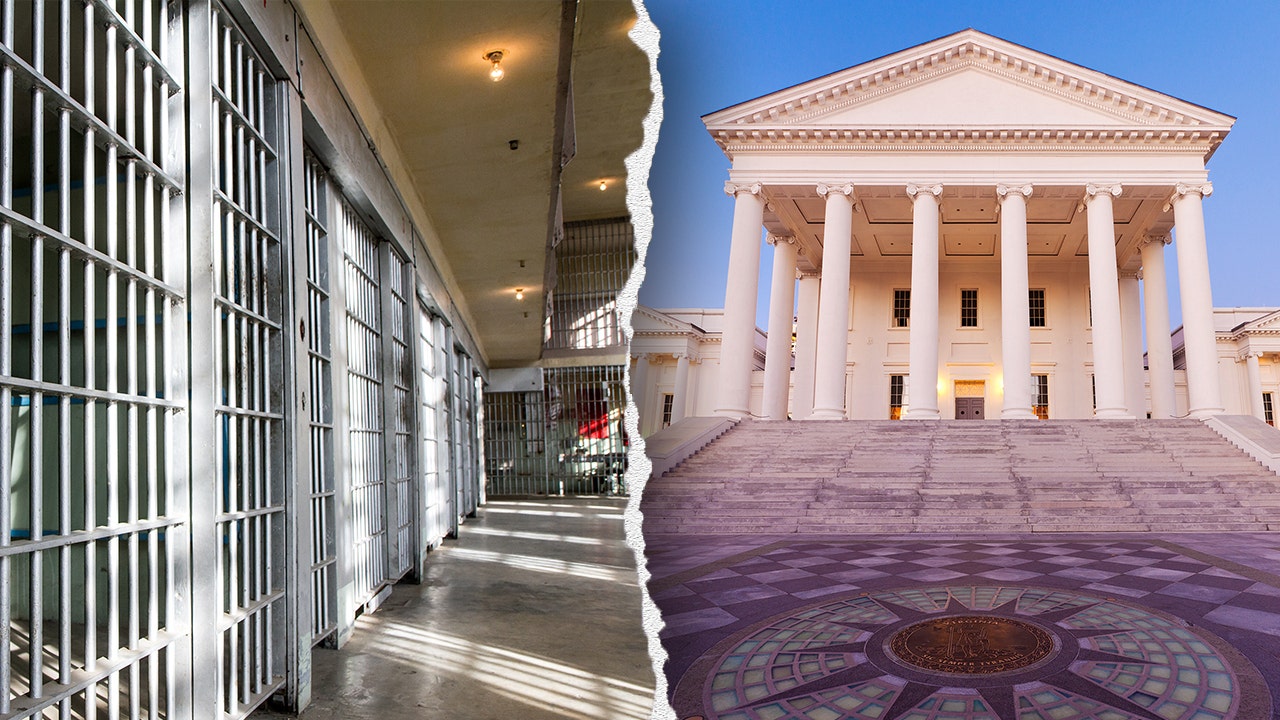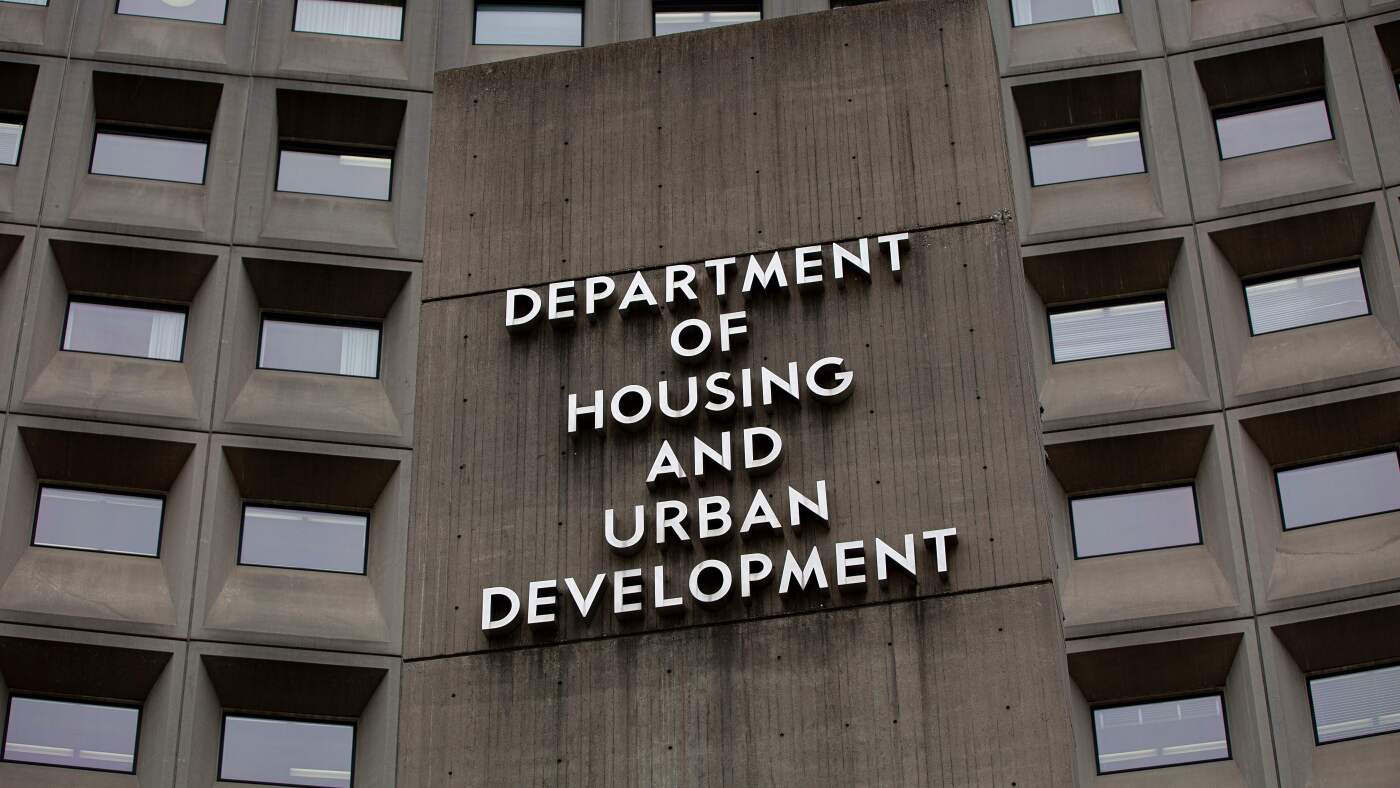Politics
Is Trump pushing his presidential powers beyond what the Constitution allows?

WASHINGTON — President Trump has begun his second term pressing his power to reshape the government by firing federal officials, ending diversity policies and deporting immigrants who are in this country illegally.
Despite fierce criticism, he is likely to succeed on those fronts because the Constitution and the laws generally put those powers in the hands of the president.
“Under our Constitution, the executive power — all of it — is vested in a president,” Chief Justice John G. Roberts Jr. said in 2020. And that includes the president’s nearly “unrestricted removal power” of officials throughout the government, he said.
The court’s conservative majority has also struck down racial diversity policies in universities and said repeatedly that the president has broad authority to enforce immigration laws.
In some areas, however, Trump appears to be claiming powers that go well beyond the president’s authority set out in the Constitution.
He says he can, by executive order, rewrite the 14th Amendment of 1868 and deny citizenship to some children who are born in the United States to parents who are not citizens.
And this week, the White House claimed the power to temporarily freeze federal spending that has been approved by Congress to see whether it is aligned with “presidential priorities.”
On Wednesday, the White House quickly rescinded the freeze memo that set off alarm and confusion across the country. But a legal debate persisted over whether Trump exceeded his authority by making the move.
The Constitution gives Congress what is often called the “power of the purse.” While the president may propose a budget and veto spending bills he opposes, Congress in the end gets to decide how much is spent and for what.
The current spending measures came from the Republican-controlled House of Representatives. Even so, Trump’s Office of Management and Budget said in its two-page memo that it needed to pause spending to prevent using federal money to “advance Marxist equity, transgenderism and green new deal social engineering.”
Despite those novel claims, the conflicts over spending are not new.
Presidents have often disagreed with Congress on budget matters, and the dispute flared up in the early 1970s when President Nixon refused to spend money on social programs that had been supported by congressional Democrats.
In response, Congress adopted the Impoundment Control Act of 1974 to resolve disputes. It says the president may seek to “defer” some spending temporarily or “rescind” it entirely if Congress approves. This hold or pause can last for 45 days.
Under that law, the Trump administration could ask Congress to reconsider some spending items. But if Congress refuses, the law says the money must be disbursed.
Trump, however, has insisted the impoundment act is unconstitutional, and he has been determined to challenge it. His campaign website said the law’s restrictions infringe the president’s powers to “crush the Deep State.”
Moreover, he said, “leading constitutional scholars agree that impoundment is an inherent power of the president.”
Stanford Law professor Michael M. McConnell, a former federal appeals court judge appointed by President George W. Bush and the director of its constitutional law center, finds that claim questionable.
“I do not know a single scholar who thinks the president has the constitutional authority to violate the Impoundment Control Act,” McConnell said.
A federal judge in Seattle has temporarily blocked Trump’s order ending birthright citizenship and described it as “blatantly unconstitutional.”
On Tuesday — before Trump rescinded the spending-freeze memo — a federal judge in Washington, D.C., temporarily blocked the administration’s “pause” on federal spending.
White House Press Secretary Karoline Leavitt said rescinding the memo should “end any confusion.” But she added that the budget office will continue to examine the spending programs to see whether they comply with Trump’s executive orders.
These tests of presidential powers may ultimately reach the Supreme Court, particularly if Trump administration lawyers file emergency appeals to challenge any judges who block his orders.
They will go before a court with six conservative justices who are Republicans appointees — three named by Trump — and believers in strong executive power.
Last year, justices surprised many legal experts when they ruled broadly that an ex-president cannot be prosecuted for “official acts” while in the White House.
“Under our constitutional structure of separated powers,” the president may not be punished in court for the “exercise of his core constitutional powers,” Roberts wrote in Trump vs. U.S.
Now, the court may have to decide whether the president’s powers extend well beyond the core duties of his office.

Politics
Trump administration halts legal representation for 26,000 immigrant children

The Trump administration has halted a program that provided lawyers to nearly 26,000 immigrant children, some too young to read or speak, who are or were under the custody of the Office of Refugee Resettlement.
The children — about 4,000 of whom live in California — face deportation, and many don’t have parents or legal guardians in the country.
The Interior Department on Tuesday ordered the Acacia Center for Justice, which coordinates the federally funded program that paid the attorneys, “to stop work.” In its letter, the agency cited contracting rules to justify the program pause, but did not offer clear reasons why.
“The stop work order is being implemented due to causes outside of your control and should not be misconstrued as an indication of poor performance by your firm,” the letter said.
The departments of Interior and Health and Human Services, which oversees the Office of Refugee Resettlement, did not respond to a request for comment.
Since taking office, the Trump administration has sought to weaken portions of the immigration system that support detainees. The orders come as an administration advisory group, which billionaire aide Elon Musk calls the Department of Government Efficiency, has been firing federal workers throughout the government and eliminating programs that it says don’t align with the administration’s objectives.
The move rattled immigrant rights group that have been representing children, some who are just months old.
“This is a catastrophe that we had hoped we could avoid,” said Michael Lukens, executive director of Amica Center for Immigrant Rights in Washington. “Many NGOs will have to close. It signals a propensity right now to get rid of funding without any thought of human impact.”
Acacia receives about $200 million in federal funds annually as part of a five-year contract that is up for renewal next year. It works with 99 service providers across the country to offer children legal counsel and gives tens of thousands more children basic legal information and other legal services.
Lukens said Amica is considering many remedies, possibly including a lawsuit to stop the action.
Some of the children who are part of the program have been abused, persecuted or trafficked.
“This means that children are expected to show up in court, as of tomorrow, on their own, with no legal counsel, and try to defend themselves from deportation in an adversarial system,” said Daniela Hernández Chong Cuy. Her small Pasadena office represents 63 children ages 2 to 17 years old.
And while she said her oath ethically obligates her to defend these children, she doesn’t know how the office will survive in its current form if payments don’t come in. About three-quarters of her clients fall under the contract.
“The system is expecting these kids to be able to explain to the court their reasons why they fear going back, file legal applications and legal papers, then translate these documents,” she said. “These are children with literally no adults here in the United States. So they have nobody to refer to, to say, ‘Hey, can you help me find a private attorney?’ These are kids, literally.”
The program dates back two decades and grew as the number of unaccompanied minors rose at the southern U.S. border and advocates increased pressure during the Obama administration, which pushed to quickly arraign juveniles whether or not they had counsel.
“The effect of this move is that thousands of children will be unlawfully deported, and that will surely include children whom Congress intended for the immigration law to protect,” said Ahilan Arulanantham, co-director of the Center for Immigration Law and Policy at UCLA, who was part of a lawsuit against the Obama administration. “It’s cruel.”
Children do not have the right to a court-appointed attorney, though the U.S. recognizes the right to a lawyer. According to Acacia, since 2017, about 57% of children with pending cases have legal representation, a figure that had dropped from previous years.
“The administration’s decision to suspend this program undermines due process, disproportionately impacts vulnerable children, and puts children who have already experienced severe trauma at risk for further harm or exploitation,” Shania Aber, executive director of the Acacia Center for Justice, said in a statement.
“This decision flies in the face of decades of work and bipartisan cooperation spent ensuring children who have been trafficked or are at risk of trafficking have child-friendly legal representatives protecting their legal rights and interests.”
Politics
Here’s What to Know About Congressional Republicans’ Budget Plans

The Senate on Tuesday evening voted on party lines to adopt a budget outline designed to clear the way for a major piece of President Trump’s domestic agenda, putting forth a measure that calls for increasing spending on immigration enforcement and defense while cutting other federal programs.
Republicans in Congress have been consumed for weeks with advancing a budget blueprint to power their push to enact Mr. Trump’s sweeping tax and immigration agenda. Approval of such a plan is a crucial first step if Republicans want to avail themselves of a process called budget reconciliation, which allows legislation that affects government revenues to pass the Senate on a simple majority vote.
For decades, both parties have used that maneuver to push major domestic policy legislation through Congress — including tax cuts, health care policy changes and economic relief packages — over the opposition of the minority party. The stakes are exceedingly high, and the process is tremendously difficult.
The House and Senate, both controlled by Republicans, have been working on separate budget plans and are at odds on how to move forward. With the House G.O.P. divided and delayed in considering their outline, the Senate is moving ahead.
Here’s what you need to know about the budget.
What is a budget resolution?
In theory, Congress is supposed to adopt a budget resolution each year setting a top-line number for federal funding and providing general contours for how that money should be spent. After the plan is approved, it falls to lawmakers on the Appropriations Committees to allocate federal dollars, following the blueprint.
Lawmakers in recent years have not produced such a plan or put it to a vote, sidestepping tough decisions about what programs to spend on and what programs to cut. Instead, congressional leaders, in collaboration with senior appropriators, have agreed on the overall numbers and simply passed spending legislation each year.
But in order to use the reconciliation process, the House and the Senate must each adopt a budget resolution that lays out broad areas of agreement on where to increase and decrease spending.
The budget resolution is just a blueprint. Unlike a spending bill, it does not carry the force of law, and it does not fund the government. Its consideration is entirely separate from another task that Republicans in Congress have in the weeks ahead: agreeing to and passing legislation to keep federal funding flowing past a March 14 deadline.
The budget measure being considered this week does not even lay out what specific legislative changes to take in order to meet the spending targets it contains. Those changes must be detailed in separate legislation — one or multiple bills — that is subject to restrictive rules for what can be included and which must pass both the House and Senate to become law.
What’s the difference between the House and Senate blueprints?
The Senate blueprint is far more bare-bones than the House plan. It calls for increasing military spending by $150 billion. Funding for border security measures, including additional detention beds and Immigration and Customs Enforcement agents, would increase by $175 billion. It does not lay out specific spending cuts to pay for those increases, but Senator Lindsey Graham, the South Carolina Republican who chairs the Budget Committee, has indicated that the legislation would be fully paid for, in part through new revenues from domestic drilling.
Mr. Graham has said the blueprint represents just the opening salvo in the Senate’s legislative drive, and that it would be followed by a second bill that would extend the 2017 tax cuts.
The House plan is both more expansive and more granular, in an effort to meet the demands of conservative hard-liners who have demanded that House G.O.P. leaders guarantee deep spending cuts.
That blueprint calls for legislation that would add roughly $3 trillion to the deficit over a decade, while imposing deep cuts in spending on health care and food programs for low-income people. That would help pay for $4.5 trillion in tax cuts. It also calls for raising the debt limit by $4 trillion.
Why are the House and the Senate advancing different plans?
House and Senate leaders have remained divided over the best way to enact Mr. Trump’s fiscal promises into law. In the Senate, Republicans have argued that lawmakers should deliver the president an early political victory and quickly pass legislation increasing funding for immigration enforcement, arguing that the Homeland Security Department desperately needs more money to carry out the White House’s ambitious deportation agenda.
But G.O.P. leaders in the House have argued that lumping Mr. Trump’s entire domestic policy agenda into one big bill will make it easier to pass in a chamber where Republicans have a razor-thin majority and will need to muster near-unanimity in order to pass the blueprint.
Senate leaders initially deferred to the House, but after internal divisions slowed their efforts to put together a budget plan, Mr. Graham went ahead and advanced his own plan.
What programs are on the chopping block?
Because the budget resolution only lays out broad spending targets by committee, Republicans have not yet had to choose which federal programs they will cut — or by how much.
But the House blueprint hints at where Republicans plan to find the money to finance their tax cuts. For example, the plan instructs the Energy and Commerce Committee, which oversees Medicaid, to come up with at least $880 billion in cuts. That accounts for more than half of the reductions laid out in the budget outline.
Those choices will be among the toughest Republican leaders will have to make, especially in the House. They will need to balance the demands of hard-right conservatives who want to gut Medicaid and food stamps against the entreaties of politically vulnerable moderates whose constituents rely on those programs.
At the same time, they will have to decide which tax cuts championed by Mr. Trump are essential, and which they can jettison. Just extending the 2017 tax cuts alone would cost roughly $4 trillion over the next 10 years.
Andrew Duehren contributed reporting.
Politics
Bipartisan probation reform modeled off DeSantis and Jay-Z efforts primed for passage in VA

Bipartisan Virginia lawmakers are putting forward a criminal justice reform bill proponents say is modeled after a 2022 Florida law that featured the unlikely pairing of Gov. Ron DeSantis and rap mogul Jay-Z.
State Del. Wren Williams, R-Stuart, is spearheading the effort that already garnered the support of the entire Democratic majority in Virginia’s lower House earlier this month.
The Democratic-majority state Senate is set to vote on its version of the legislation on Wednesday, after which it will then be conferenced into a final bill for Gov. Glenn Youngkin’s review.
Williams’ legislation will offer convicts on supervised probation the ability to fulfill certain criteria in exchange for lighter treatment.
One example is that probates who can prove they are holding a job, seeking educational opportunities or partaking in rehabilitation programs for several months could see their probationary period shortened.
Those provisions and others in the bill are similar to DeSantis’ legislation from three years ago that had been championed by the Jay-Z-founded criminal justice “REFORM Alliance.”
The Florida law, authored by a Tampa Republican, allows probates to earn education and workforce credits that in turn get them out of the system faster, according to Axios.
In Virginia, Williams told Fox News Digital he was inspired both by Florida’s law and the fact that reform initiatives like the First Step Act on the federal level have been key priorities for President Donald Trump.
YOUNGKIN TO DRAFT SANCTUARY CITY BAN, MAKING STATE FUNDING CONTINGENT ON COOPERATION
“Virginia [is] offering conservative solutions that emphasize rehabilitation and second chances,” Williams said.
“Virginia’s approach mirrors Florida’s successful model, focusing on providing individuals under supervision the opportunity to reduce their probation terms by engaging in rehabilitative programs like job training, education, and mental health services.”
While typically viewed as a liberal or Democratic bailiwick, Williams added that Virginia’s legislation proves conservatives can create a consensus on reforms that also align with their values while remaining compassionate.
“By focusing on rehabilitation and offering individuals the chance to prove their commitment to change, the state has demonstrated that reducing recidivism, lowering costs, and promoting public safety are achievable goals,” he said.
Crime and reform were top issues in the last gubernatorial election, with Youngkin and former Gov. Terry McAuliffe trading barbs, including about Democrats’ “defund the police” group that had endorsed the Democrat and purportedly “criminals-first” appointees McAuliffe had made to the parole board.
YOUNGKIN INVITES NEW TRUMP ADMIN TO SETTLE IN VA OVER DC, MD
Lt. Gov. Winsome Sears, the front-running Republican gubernatorial candidate in November’s race, heartily endorsed the legislation in comments to conservative radio host John Fredericks this week.
“What I’m talking about is we have about 50,000 men and women who are on probation. And if we can give them incentives, we can get them engaged, get them education; then if you have a job, of course, then there’s something about work that dignifies the soul,” Sears said.
“And all work, of course, is dignified. This is America, where dreams come to see the realization of it. It’s where you can say to your children, ‘You can make it in America.’”
“So I’m all for lifting up that soul,” Sears concluded.
Top Democratic candidate, former Rep. Abigail Spanberger, has also been a proponent of some criminal justice reforms, vociferously supporting the George Floyd Justice in Policing Act while in Congress.
A spokesperson for Youngkin told Fox News Digital the “governor will review any bills that come to his desk.”
In 2024, he vetoed a similar bill, HB-457, which would decrease probationary periods and establish criteria for reduction of such.
-

 Culture1 week ago
Culture1 week agoThe Eagles defense couldn’t stop Mahomes in 2022. In Super Bowl 59 they got their revenge
-

 News1 week ago
News1 week agoMotley Crue lead singer Vince Neil's plane rams into parked jet at Arizona's Scottsdale Airport – The Times of India
-

 Politics1 week ago
Politics1 week agoUSAID inspector general fired days after publishing report critical of aid pause
-

 News1 week ago
News1 week agoSnow and ice blanket parts of the northern U.S., and more winter weather is on the way
-

 News1 week ago
News1 week agoHUD is bracing as DOGE seeks to cut waste, fraud. Union leaders have a suggestion
-

 Technology1 week ago
Technology1 week agoFCC to investigate Comcast for having DEI programs
-

 World1 week ago
World1 week agoBellingham strikes late as Real Madrid pile misery on Man City
-

 Sports1 week ago
Sports1 week agoFootball and social media: What next for players and clubs in a changing landscape?











